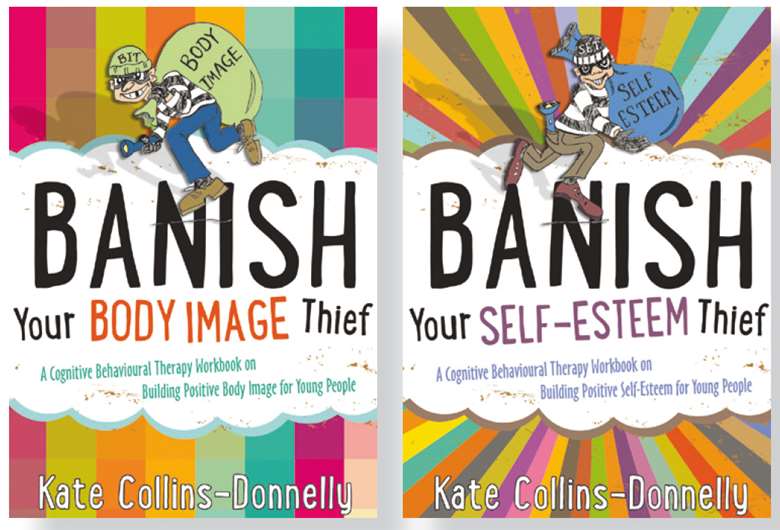Banish Your Body Image Thief; Banish Your Self-Esteem Thief
Claudia McGowan
Tuesday, February 3, 2015
Effective frameworks to explore anxieties

Kate Collins-Donnelly
Jessica Kingsley Publishers
ISBN: 978-1-84905-463-8; ISBN: 978-1-84905-462-1
£14.99 each
240 pages each
In these two books, author Kate Collins-Donnelly manages to put together a compelling assemblage of useful resources, worksheets, and attractive illustrations, which can be accessed by young people and professionals alike. The two titles address different issues, although of course these may at times overlap, but they are structured and designed following exactly the same format.
A brief explanation about the core ideas informing the methodology adopted by each book is offered in the books' introductions. Both are based on cognitive behaviour therapy (CBT) and mindfulness principles, therefore many of the worksheets would be inviting the young person to became more aware of the sequence "think, feel, act".
The author indicates that the books were written as a self-help tool for young people, although I was then pleased to read that immediately after stating this, she adds that for those with more complex histories and presentations it would be recommended they worked in partnership with a professional rather than on their own.
Since being asked to review the books I was fortunate enough to be able to use them with a few of the young people I work with and to collect some observations and feedback. I work in a tier-3 CAMHS service as well as in private practice and with a varied range of presentations and level of needs.
The worksheets were received well by the young people and could be used in the session as a starting point especially with those that found verbalising challenging. They could also be used as "homework" and some of the young people responded well to this aspect as it kept them engaged in the therapeutic process for longer and gave them a sense of being more in control.
Throughout the books there are short stories from other young people that may have experienced something similar. This was perceived by the young person in the session as "normalising" as it was definitely a positive aspect of the book and something that helped them engage with the rest of the work.
The book also served as a "third" point of view in the room, especially with a client who really struggles to accept any point of view that comes from what they perceive as authoritative positions. In this case the book was seen as neutral and so they were able to accept it as such.
I personally feel that these books would be most effective when used with the help of a therapist, youth worker or another similar professional, as difficulties with body image and self-esteem find their roots in very muddy grounds and a young person left alone with the book may suddenly open a can of worms that they may not know how to deal with, or at the very least the whole of the process can in itself be very messy indeed.
Reviewed by Claudia McGowan, play & creative arts therapist, and outreach worker
To purchase books reviewed in this section, go to cypnow.co.uk/bookstore




